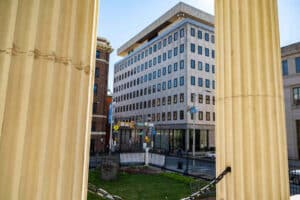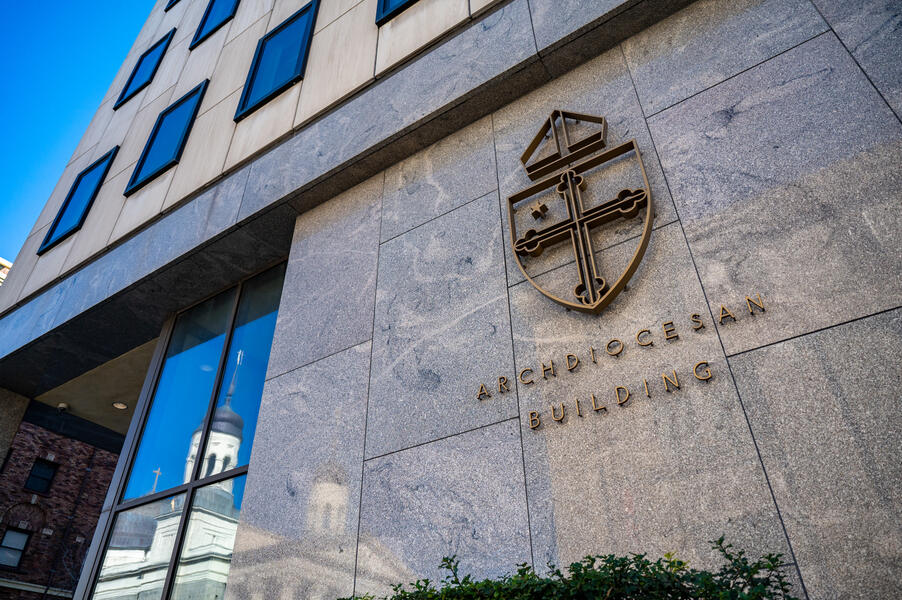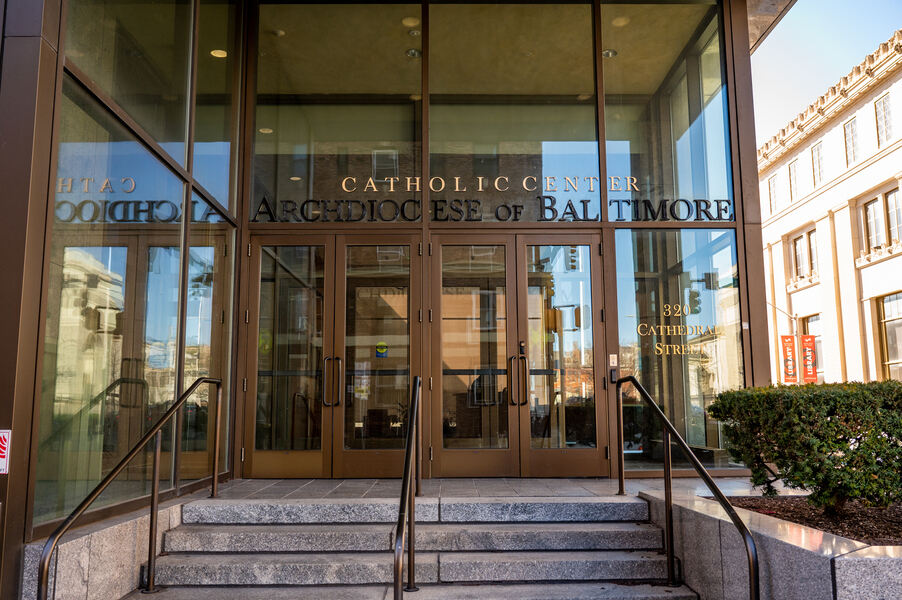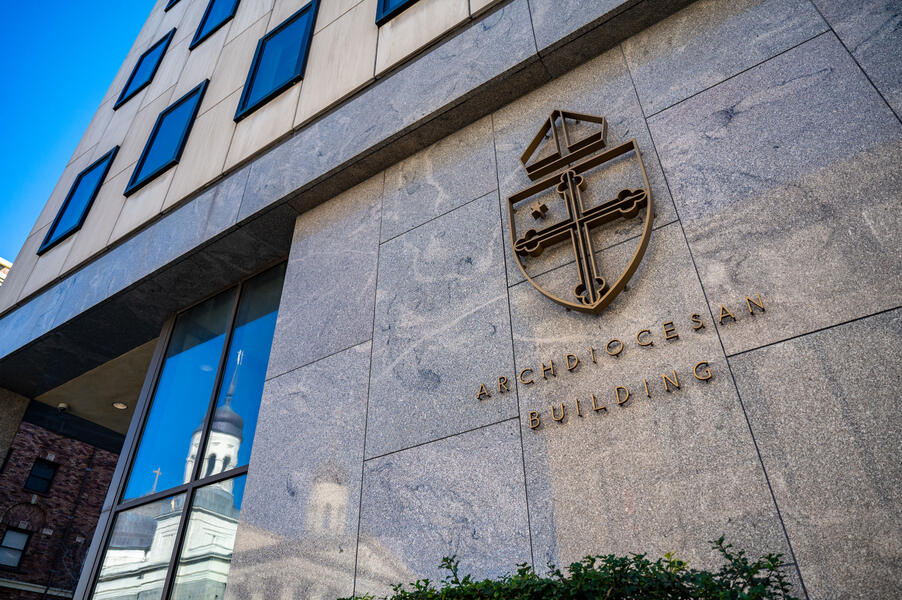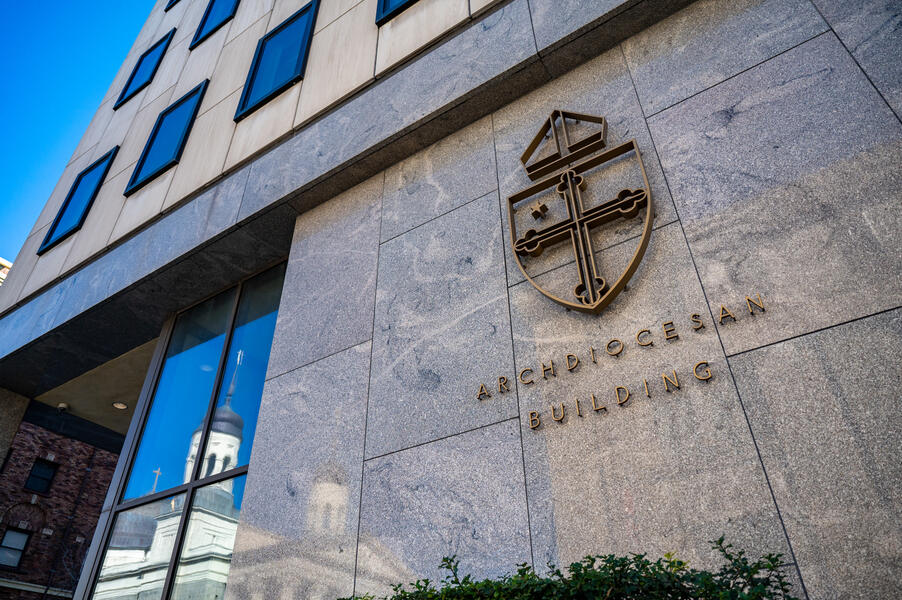In a Sept. 5 message to members of the Archdiocese of Baltimore, Archbishop William E. Lori said that in light of the Oct. 1 implementation of a new law in Maryland that removed any statute of limitations for civil suits involving child sexual abuse approaches, the archdiocese was weighing its options to respond to potential lawsuits.
The Child Victims Act, passed by the Maryland General Assembly earlier this year, removed any statute of limitations for suits that were previously barred because the abuse happened decades ago. It also caps damages against public institutions such as government schools at $890,000 per claimant for injuries arising from an incident or occurrence; non-economic damages awarded to a single claimant against individuals or private institutions such as churches are capped at $1.5 million per defendant.
Archbishop Lori said the archdiocese has several options to address the number of cases expected to be filed in October, including: challenging the constitutionality of the law, litigating each case separately, settling cases or reorganizing under Chapter 11 of the federal bankruptcy code.
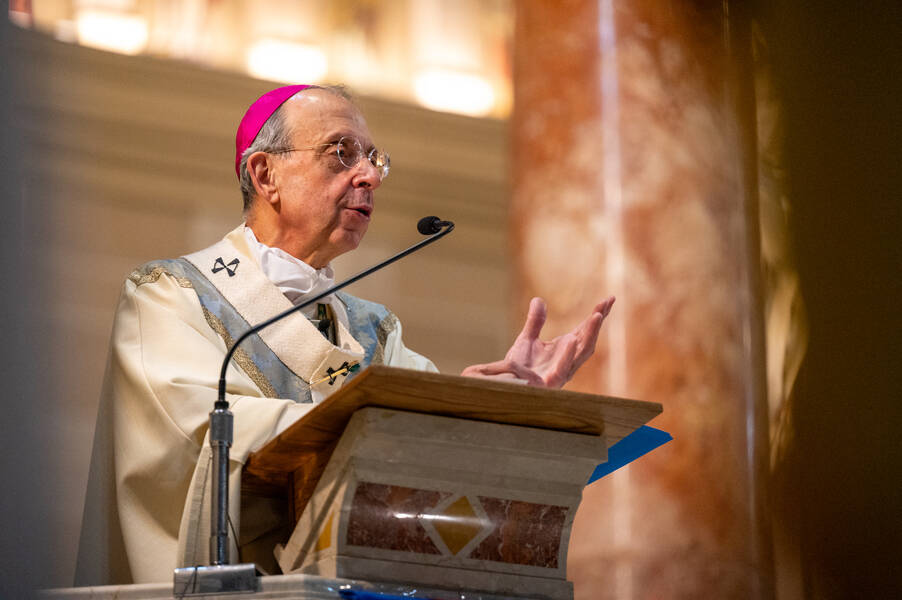
“Litigating them individually would potentially lead to some very high damage awards for a very small number of victim-survivors while leaving almost nothing for the vast majority of them. The archdiocese simply does not have unlimited resources to satisfy such claims; its assets are indeed finite,” the archbishop said.
In his message, the archbishop said he has two overarching goals as the archdiocese considers its response: “the healing of victim-survivors who have suffered so profoundly from the actions of some ministers of the church” and “the continuation and furtherance of the many ministries of the archdiocese that provide for the spiritual, educational, and social needs of countless people – Catholic and non-Catholic – across the state.”
In that light, Chapter 11 reorganization – which allows a for-profit or nonprofit institution to continue operating within its purposes – could help the archdiocese meet the needs of helping victims while continuing its ministries, including supporting parishes, schools and charitable work. This differs from a Chapter 7 bankruptcy in which an entity is closed and all its assets are sold off to satisfy creditors.
“In this type of reorganization (Chapter 11), the archdiocese would be required to provide resources which would be used to compensate victim-survivors while at the same time ensuring our mission can continue,” Archbishop Lori said.
The archbishop said he plans to prioritize both goals. “We do not believe that these goals are mutually exclusive. To that end, it is essential for the archdiocese to pursue the best possible solution to meet both goals.”
If the archdiocese files for Chapter 11 reorganization, separate and restricted assets – including the retirement/pension plan for employees; insurance trusts for health care benefits for employees; the Catholic Community Foundation, which includes endowments and donor-advised funds; the Interparish Loan Fund; and Catholic Charities – would not be available to the archdiocese to resolve child abuse claims.
Kim Montgomery, chief advancement officer for the archdiocese, told donors in a Sept. 15 message, “Should the archdiocese file for Chapter 11 bankruptcy reorganization, your restricted donations could not be used to cover legal costs. Further, other separate entities such as parishes, schools and the Catholic Community Foundation Inc. are not contemplating filing for bankruptcy reorganization. If the archdiocese files for reorganization, the archdiocese would use only its unrestricted assets to satisfy claims and pay various costs.”
Although many states have passed laws creating “lookback windows” allowing victims to file civil suits in a finite period, usually one to three years, Marie T. Reilly, a bankruptcy law expert and professor at Penn State Law at Penn State University, said Maryland and Vermont may be the only ones to allow an unlimited time for claims to come forward.
Reilly, who has done extensive research about diocesan bankruptcies, said dioceses choose Chapter 11 reorganization because of the volume of claims and the costs in time and money – as well as “the diversion from mission for years while these cases are winding their way through state courts” – to reach a litigated or negotiated settlement with each claimant.
Instead of approaching each case on the merits or resolution of each claim, reorganization is a kind of “batch processing of all claims,” she said.
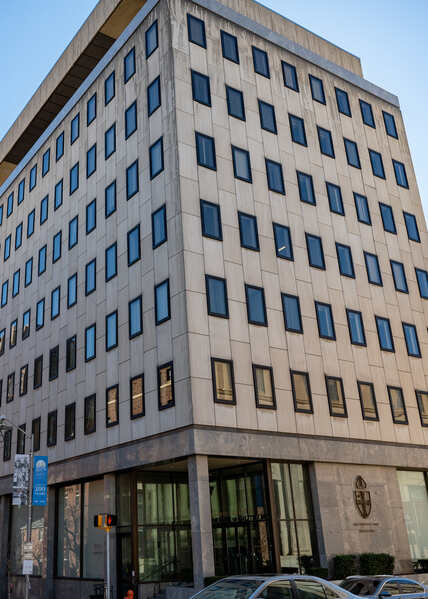
“Everybody who has a claim or might have asserted a claim as of the date of the filing of the petition is treated as a creditor in this bankruptcy case, and they’re all represented by an unsecured creditors committee. And the unsecured creditors committee owes a fiduciary responsibility to the whole group of them,” Reilly said.
She noted that with litigation, some of those who file suit early or whose cases get brought to court first may get more compensation.
Although that might be disappointing to some early filers who receive a smaller amount than they might have received as a plaintiff, the reorganization can make the group of creditors as a whole better off than they would be if they were to take their chances outside of bankruptcy, Reilly said.
However, one woman who works extensively with victim-survivors of clergy abuse said the individual litigation of cases can help those who were harmed. Sara Larson, executive director of Awake Milwaukee, a grassroots Catholic nonprofit organization based in Wisconsin that addresses abuse in the church, said most survivors seek two components in such cases: financial compensation and acknowledgement of their pain.
She noted that the end of chapter 12 of Paul’s First Letter to the Corinthians says that if one part of the body suffers, all the parts suffer with it.
“I have a strong conviction that we, as members of the Body of Christ, at least need to pay attention to the suffering of all the parts,” she said, “and those who have been abused by Catholic leaders are often marginalized and neglected by those of us who are in the church. … We all need to be part of the work for justice and accountability
and healing.”
Larson said, “I often say, the impacts of abuse last a lifetime, so our care should too.”
For decades, the Archdiocese of Baltimore has had a zero-tolerance policy regarding those accused of abuse. The archdiocese also offers to pay for counseling with a therapist of the person’s choice for as long as it is helpful to the victim-survivor, and often includes their families. Since the early 1980s, the archdiocese has paid more than $13.2 million to 301 victim-survivors for counseling and direct payments
Since 2007, the archdiocese has also offered a financial mediation program overseen by a non-Catholic judge for survivors upon their request for monetary compensation in lieu of counseling, resulting in 105 settlements for a total of $6.8 million.
Deacon David Roling, who serves at St. Joseph Parish in Odenton and is a defense attorney in medical malpractice, said that in cases he handles in Maryland, the courts have tried to move cases from filing to going to trial in about 18 months, sometimes shorter.
However, he said, attempting to litigate the number of cases the archdiocese or other private institutions in the state could face would mean that the cases would take much longer than 18 months to resolve, because it’s not just one case that needs discovery.
Deacon Roling, ordained in 2013, has specialized in medical malpractice, products liability and insurance defense for Wharton & Levin in Annapolis since the late 1980s.
“Something needs to be done for (the victim-survivors) and I don’t have a problem with that. But to basically tell a current church that does so much good, that we’re going to put you out of business doesn’t make sense.
“So, in my mind Chapter 11 is the perfect way to let the church continue forward with all the good that it does do, which I think is outweighed by most of its badness, and most of its badness is so old,” he said.
Penn State Law’s Reilly said litigating or settling individual claims outside a bankruptcy reorganization does not provide the finality the diocese might seek. That may be provided in what the courts call a channeling injunction in the reorganization process.
In general, most parishes and schools may be included in the channeling injunction if they contribute to the settlement, so that they would not face lawsuits in the future for past claims.
“Once the bankruptcy plan is confirmed, and the settlement trust is created, all creditors, all sex abuse claimants who had a claim at the moment of the bankruptcy petition, or who could have had a claim because of their injury in the past, are permanently and forever channeled to the settlement trust,” she said.
“The moment you file the bankruptcy petition, it separates the world into two parts: the pre-petition period and the post-petition period, so persons who are injured in the post-petition period are unaffected by the bankruptcy. Their rights are unaffected. They’re not going to be subject to any channeling injunction,” Reilly said.
Email Chris Gunty at editor@CatholicReview.org
Read More 2023 Attorney General's Report
Copyright © 2023 Catholic Review Media
